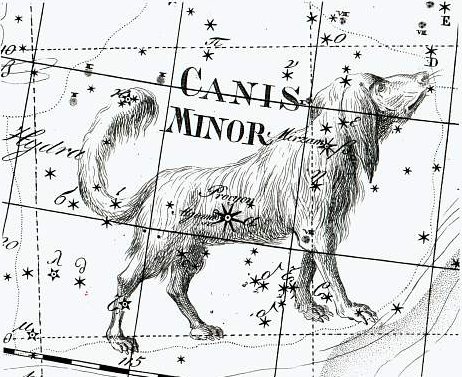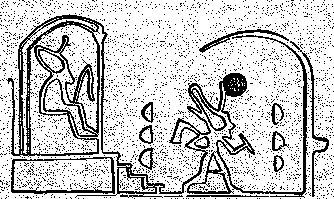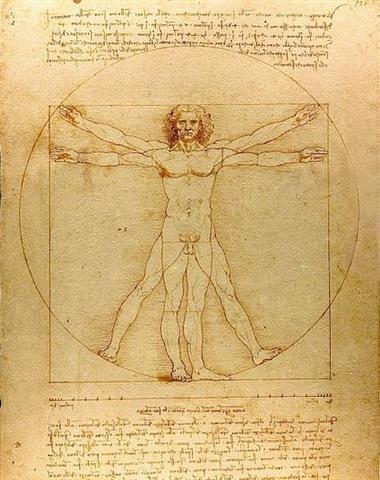|
1. The star β Canis Minoris, Gomeisa, is rising a few days earlier than Procyon, and in Bode's picture it is named Mirzam:
Allen: "Gomeisa is from Ghumaisā of the constellation, changed in the Alfonsine Tables to Algomeyla, and by Burritt to Gomelza. Occasionally it has been Al Gamus, from another of the Arabians' titles for the whole; and Al Murzim, identical with the name of β Canis Majoris [though here we are naming β Canis Majoris - not β Canis Minoris - Mirzam], and for a similar reason, - as if announcing the brightest star of the figure. The Arabs utilized this, with Procyon, to mark the terminal points of their short Cubit, or Ell, Al Dhirā', their long Cubit being the line between Castor and Pollux of Gemini. This same word appears in the title of one of the moon stations in that constellation." "According to the Ancient Egyptian units of measurement, the Egyptian Royal cubit was subdivided into 7 palms of 4 fingers/digits each." (Wikipedia) (The thumb is of a different kind and cannot be counted together with the rest of the fingers, it would be as bad as muliplying oranges with bananas.) 7 * 4 = 28 is a perfect number, the 2nd of them: "The first perfect number is 6, because 1, 2 and 3 are its proper positive divisors, and 1 + 2 + 3 = 6 ... The next perfect number is 28 = 1 + 2 + 4 + 7 + 14. This is followed by the perfect numbers 496 and 8128 ..." (Wikipedia) Numbers are important in the rongorongo texts. Glyph number 496 is Ga1-23, where 12 * 3 = 36 and where we also can read the beginning of the sequence of natural numbers (1, 2, 3, ...). However, the best reading is probably to see an allusion to the perfect numbers, because the numbers in Ga1-23 illustrates the divisors in the 1st of them:
Maybe even the 2nd (28) can be found if we should search. Ga1-23 can be thought of as located at a 'perfect' position. The star Saiph (at the right foot of Orion) is rising at this point in time:
496 = 16 * 31. The number of constellations was increased from Ptolemy's original 48 to 88 by The International Astronomical Union in 1922. Should we see an allusion to the cubit in the arm at left in Ga1-23? Saiph, though, means 'Sword', and κ Orionis is at the opposite side compared to the left foot (not arm) of Orion (Rigel). We have earlier (cfr at 2 Sticks) tried to identify the right part in Ga1-23: ... The right part of Ga1-23 is another henua variant, which we recognize from ancient Egypt and from Eb6-1 (in the 24th and last period of 'the henua calendar'). It probably illustrates the void (interregnum) between one year and the next:
At The Arm of Sun the left component in Ga1-23 was discussed: ... The right part of Ga1-23 evidently indicates 'absence of rule' (interregnum between one ruler and the next). The left part of the glyph is like a 'fist' at top which evolves into a haga rave sign. If it illustrates the path of the Sun King, then it could show how he has disappeared into the 'sancturary of the wolf-god' (cfr Eb6-1):
But this variant of haga rave (with a 'fist' high at left) deserves a glyph type of its own. Another such sign is at left in Ab6-42, and here the opposite sign at right demonstrates how spring (the season of 'eating') has arrived, i.e. the Sun King has emerged again from the 'sanctuary':
The head with open mouth at right is in contrast to the skull at left, which probably represents the season of 'off-spring' (autumn). The henua sign in the center is no longer invisible, the 'king of the land' is present. From a very low position Sun is stretching his neck high again. Thus the 'non-eating' Sun head at left should represent an even higher position, i.e. midsummer when Sun has 'eaten enough'. This is where the cycle of Sun is beginning ... ... In other words, Ga1-23 is the last glyph in this 260-day long cycle beginning with Gb1-7 ...
Another discussion followed at Da Capo:
Clearly Ga1-23 is the last glyph in the season which begins with Gb2-1, i.e. the back side of the calendar ... On the other hand, having counted up to 'a complete man' (I have suggested), could be indicated by the tagata type of glyph, e.g. as in Ga4-1 (cfr at Takaure and at Hanga Takaure):
The Vitruvian Man has 8 limbs:
"The Vitruvian Man is a drawing created by Leonardo da Vinci circa 1487. It is accompanied by notes based on the work of the architect Vitruvius. The drawing, which is in pen and ink on paper, depicts a male figure in two superimposed positions with his arms and legs apart and simultaneously inscribed in a circle and [a] square. The drawing and text are sometimes called the Canon of Proportions or, less often, Proportions of Man. It is stored in the Gallerie dell'Accademia in Venice, Italy, and, like most works on paper, is displayed only occasionally. The drawing is based on the correlations of ideal human proportions with geometry described by the ancient Roman architect Vitruvius in Book III of his treatise De Architectura. Vitruvius described the human figure as being the principal source of proportion among the Classical orders of architecture. Leonardo's drawing is traditionally named in honor of the architect. Leonardo was among the first Europeans to read Vitruvius in centuries, after manuscripts preserved in the Islamic world had been translated back into Latin." (Wikipedia) Tagata has only 2 arms (or rather wings) and 2 legs, but the legs are divided by the knees. Even a bird needs legs for contact with Mother Earth when it is time for nesting. We should remember the words of Ogotemmêli: ... During his descent the ancestor still possessed the quality of a water spirit, and his body, though preserving its human appearance, owing to its being that of a regenerated man, was equipped with four flexible limbs like serpents after the pattern of the arms of the Great Nummo. The ground was rapidly approaching. The ancestor was still standing, his arms in front of him and the hammer and anvil hanging across his limbs. The shock of his final impact on the earth when he came to the end of the rainbow, scattered in a cloud of dust the animals, vegetables and men disposed on the steps. When calm was restored, the smith was still on the roof, standing erect facing towards the north, his tools still in the same position. But in the shock of landing the hammer and the anvil had broken his arms and legs at the level of elbows and knees, which he did not have before. He thus acquired the joints proper to the new human form, which was to spread over the earth and to devote itself to toil. ... |
||||||||||||||||||||||||||||||||||||||||||||||||||||||||||||||||||||||||||||||||||||||||||||||||||||||||||||||||||||||||||||||||
















